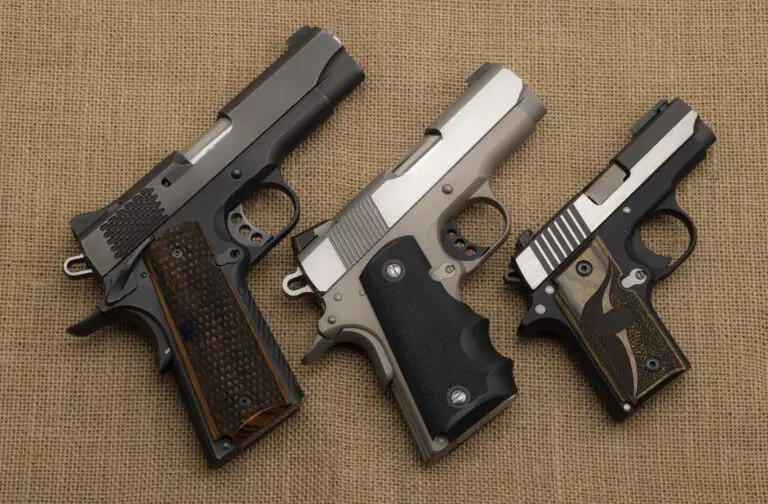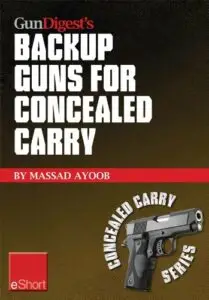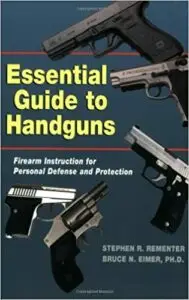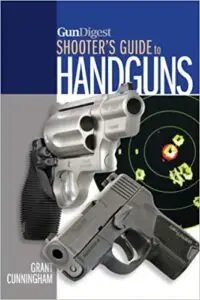
My concerns regarding the practice of carrying a backup gun relate to control; accessibility (for the bad guy as well as the officer); and the training – or non-training – issues involved.
~ Barry M. Baker Tweet

Detective Lieutenant Barry M. Baker (ret.) is a 32 year veteran of the Baltimore Police Department.
Backup gun, or BUG, describes a gun carried by a police officer in the event the officer is disarmed or the primary gun fails to function. A lot of police departments authorize their officers to carry a backup gun (BUG). What isn’t clear to me is the extent of training authorizing agencies provide their officers regarding a second weapon. I’m big on training, and I’ve always been amazed how training comes through under stressful situations. However, I’ve noticed how police officers can alter things that counteract their training.
One of my drug unit officers got into the habit of carrying his Glock semi-auto with an empty chamber. In order to conceal the weapon, he carried it inside the front of his pants. While the Glock is a perfectly safe weapon, the officer feared that an accidental discharge could cause him irreparable damage. He reasoned he’d draw the weapon, and he’d rack a round into the chamber… just like the television cops.
Training is a Powerful Thing
Then, one fateful day, he was fired on by a suspect. His training kicked in, and he drew his Glock. He came to point shoulder, and he pulled the trigger. When nothing happened, his training took him to the next phase of tap, rack, check and go. But, when he got to go, the suspect was, thankfully, gone. The point here is that his training took over under stress, and he’d forgotten about leaving the chamber empty.
The Baltimore Police Department maintained a policy prohibiting the carrying of a backup gun. However, that didn’t keep some police officers from carrying a BUG. A a recruit, I remember one officer showing me how he only loaded five chambers of his revolver. He reasoned that if a suspect gained control of his revolver, the first pull of the trigger would cause the hammer to fall on an empty chamber. This would give the officer time to draw his backup gun and shoot the suspect.
Even in that inexperienced stage of my career, I could recognize the folly of that wisdom. I knew that the probability of that officer encountering a suspect already armed with a gun was greater than the officer losing control of his. It should be obvious that if that officer had to draw and fire his weapon, that empty chamber could not be anything other than a disadvantage.
Good Arguments for a Backup Gun
In my early career, Baltimore experienced a number of officers being shot and killed with their own weapons. That problem was due – almost entirely — to the swivel holster for the .38 caliber revolver. If that hammer strap came undone, that gun was totally unsecured.
Here’s a good argument for a backup gun. I arrived first on the scene of a shooting where a large crowd was gathered. I jumped from my car, and I felt my revolver falling from the holster. Before I could react, the gun hit the pavement, and it scooted beneath my radio car. I looked across the roof of the car just knowing I was going to see someone bend down to pick up my gun. What a sick feeling. I was lucky. On my first reach beneath the car, my hand came to rest on the revolver. But, that was then.
During that period, a Baltimore officer was pursuing a suspect. Shots were exchanged during the pursuit. The officer fired his revolver empty. Instead of the suspect taking the opportunity to continue his escape, he ran back to the officer and executed the officer while he was attempting to reload. That was then. Today, that outcome would probably be much different where the officer is armed with a rapid reload semi-auto.
Technological Advances
When it comes to technological advances, I’m hard pressed to decide which is at the top of my list; the bullet proof vest or the secure holster technology. I began my career when both were non-existent, so my appreciation for both cannot be overstated. The high ammunition capacity semi-auto takes a highly valued third place on my list.
My concerns regarding the practice of carrying a back-up gun relate to control; accessibility (for the bad guy as well as the officer); and the training — or non-training — issues involved. I’m in total agreement with any reference to Murphy’s Law regarding anything; however, anything applies to everything, and I look at the backup gun as potentially putting another gun into play.
As a police officer, you’ll be in close contact with suspects on a continual basis. Some of those contacts are going to be violent, and some of those suspects may well try to disarm you. Those who attempted to disarm me never succeeded, because all of my attention and strength was focused on preventing the suspect from succeeding. I never carried a backup gun. However, had I been armed with a second gun, I’m fairly certain that some of that attention and strength may well have been diverted to ensure the security of the second gun.
Backup Gun – False Sense of Security
When you begin your police career, you’ll consider this issue… everybody does. While I’m not a big fan of the BUG, I’d never vehemently argue against the backup gun, because it’s going to be a personal decision for you. My advice would be, should you choose to carry a BUG, ensure your control of the weapon. Consider the BUG as a weapon of last resort. Don’t let the BUG provide you with a false sense of security.
7 BEST Backup Guns will Save You One Day
Related Content for Backup Gun
Advertisements






